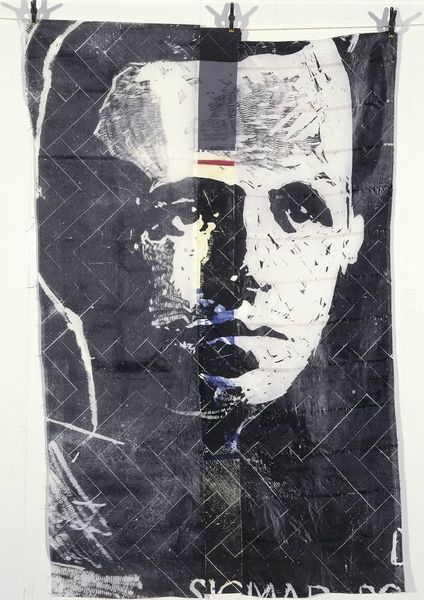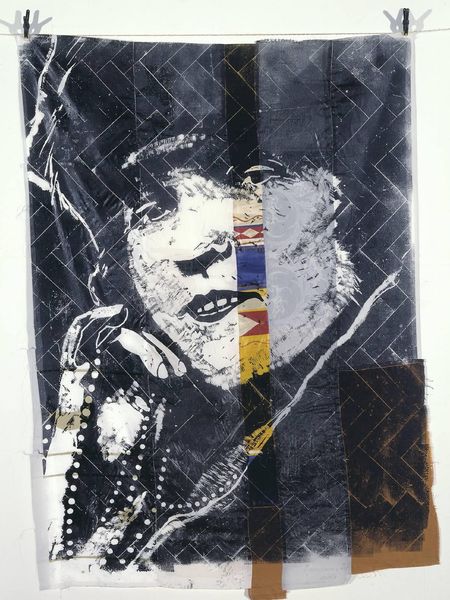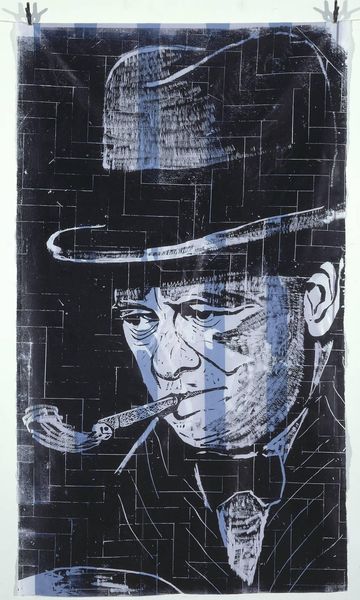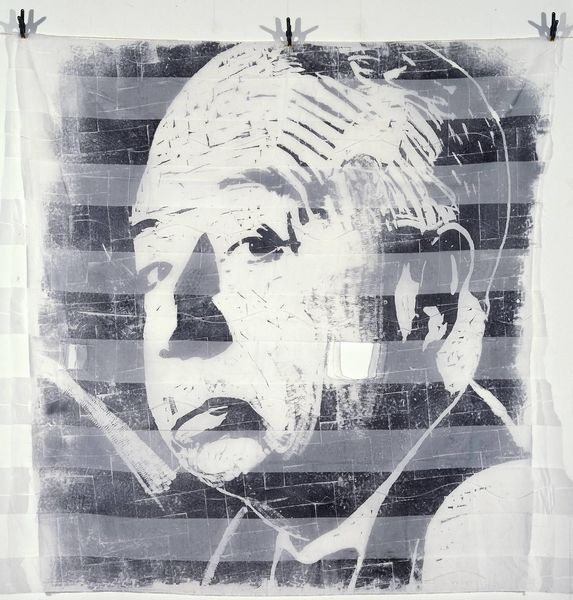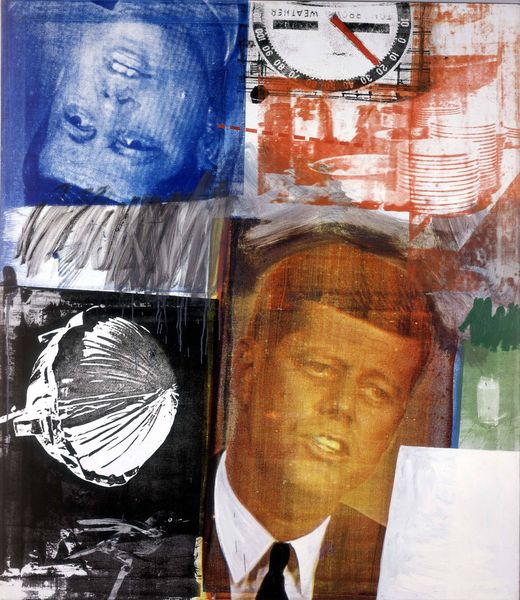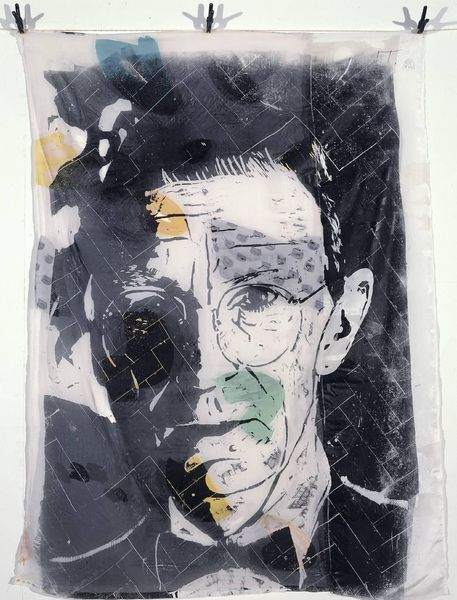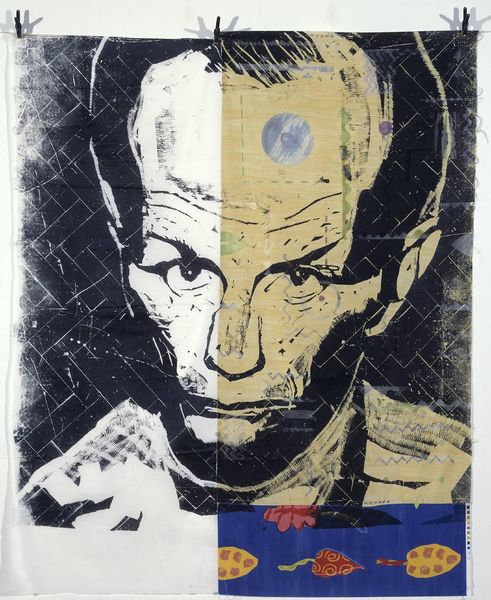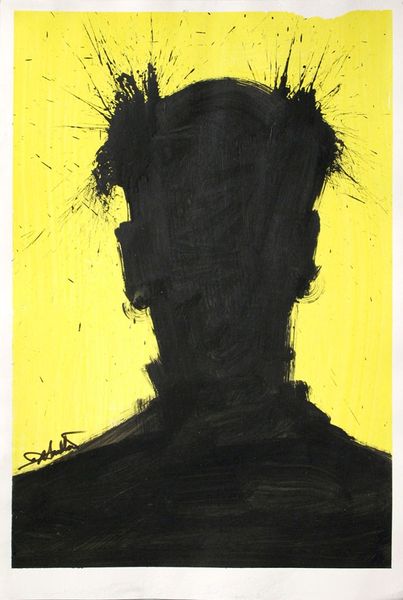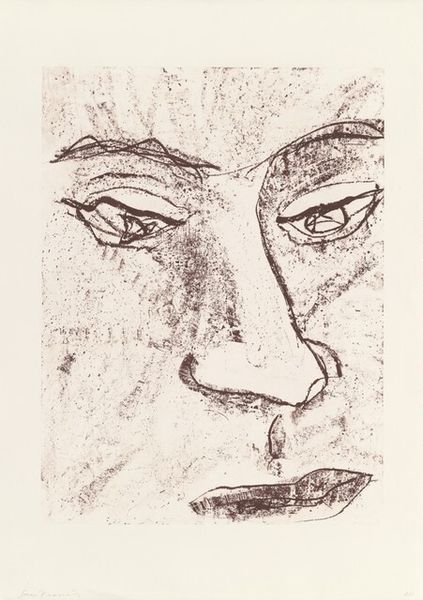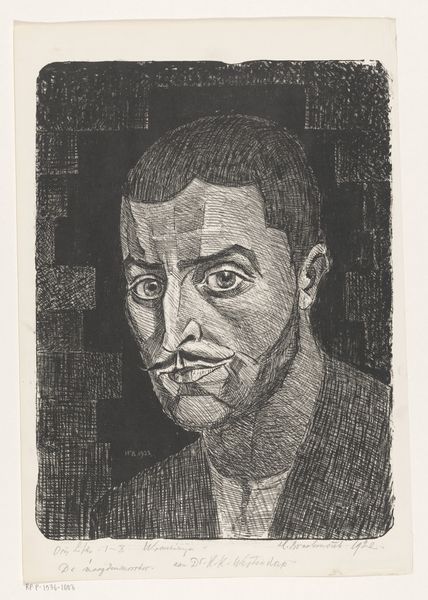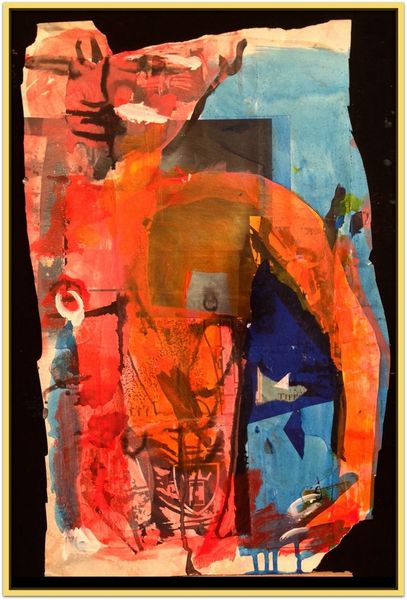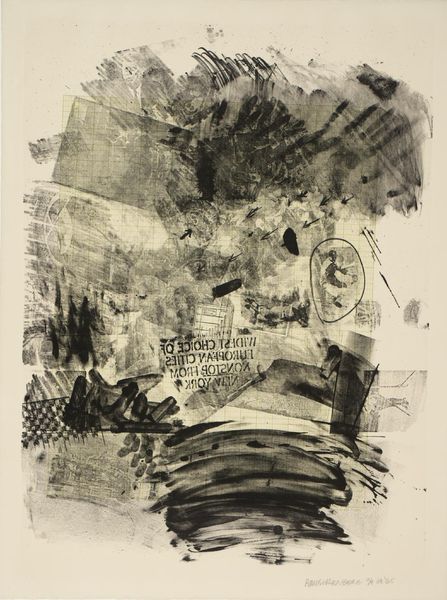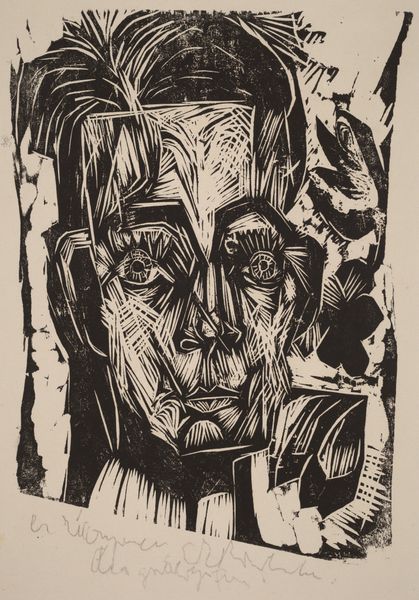
Copyright: © Thomas Kilpper | CC-BY-NC-ND 4.0 DEED, Photo: Tate
Curator: Thomas Kilpper created "The Ring: Bella Burge," a striking portrait currently held in the Tate Collections. The subject's gaze is intense, almost confrontational. Editor: There is something unsettling about the composition. The stark contrast of black, white, and that single stripe of red bisecting the face... It feels aggressive. Curator: Aggressive? I see it more as a formal device, a means to disrupt the pictorial space and draw attention to the materiality of the print itself. Editor: But doesn't that disruption speak to a larger unease, a commentary on visibility and power, considering the gaze and the context of its creation? The fracturing of the image seems deliberate. Curator: Perhaps. But the beauty of the piece lies in how the artist manipulates light and shadow to create such a powerful image with such limited means. Editor: It does demand our attention, doesn't it? Leaving you to ponder what it means to see, and to be seen. Curator: Indeed. A masterclass in visual economy and impactful composition.
Comments
tate 6 months ago
⋮
http://www.tate.org.uk/art/artworks/kilpper-the-ring-bella-burge-p78541
Join the conversation
Join millions of artists and users on Artera today and experience the ultimate creative platform.
tate 6 months ago
⋮
This is one of a series of unique prints generated from a site-specific work created in an office block on Blackfriars Road, in the London borough of Southwark. Orbit House was abandoned and scheduled for demolition when Kilpper gained access to the building in 1999. He carved a giant woodcut into the mahogany parquet covering the tenth floor, comprising an area of approximately 400 square metres. The woodcut depicted a boxing ring surrounded by an audience of some eighty characters whose names were cut around the edge of the image. The artist derived the portraits from photographs and etchings which he made into slides and projected onto the floor before carving the relief with chisels and a chainsaw. He then made a succession of prints, constituting individual portraits, on a range of new and found materials. He used old curtains left in the building, often sewing several pieces together to make one large, rectangular support. Paper sources include advertising hoarding paper and sheets of purple UV polythene film which Kilpper discovered screening windows in some rooms of the building. The herringbone texture of the parquet features strongly on all the uncut areas of the prints which were executed mainly in black ink using a specially-made giant, cement-filled roller. During the exhibition of the work, the prints were suspended on washing lines above the carved floor. Daylight from the surrounding windows filtered through their semi-translucent supports. Visitors would walk on the carved parquet while looking at the prints. A huge banner was printed from the entire surface (The Ring, collection the artist) and hung on the outside of the building for the duration of the installation. Tate owns twenty-one prints, twenty made on fabric (Tate P78537-P78556) and one on paper (Tate P78557). The Ring: Fight On (Tate T07671) is a section of the parquet flooring preserved before the building’s demolition in late 2000.
